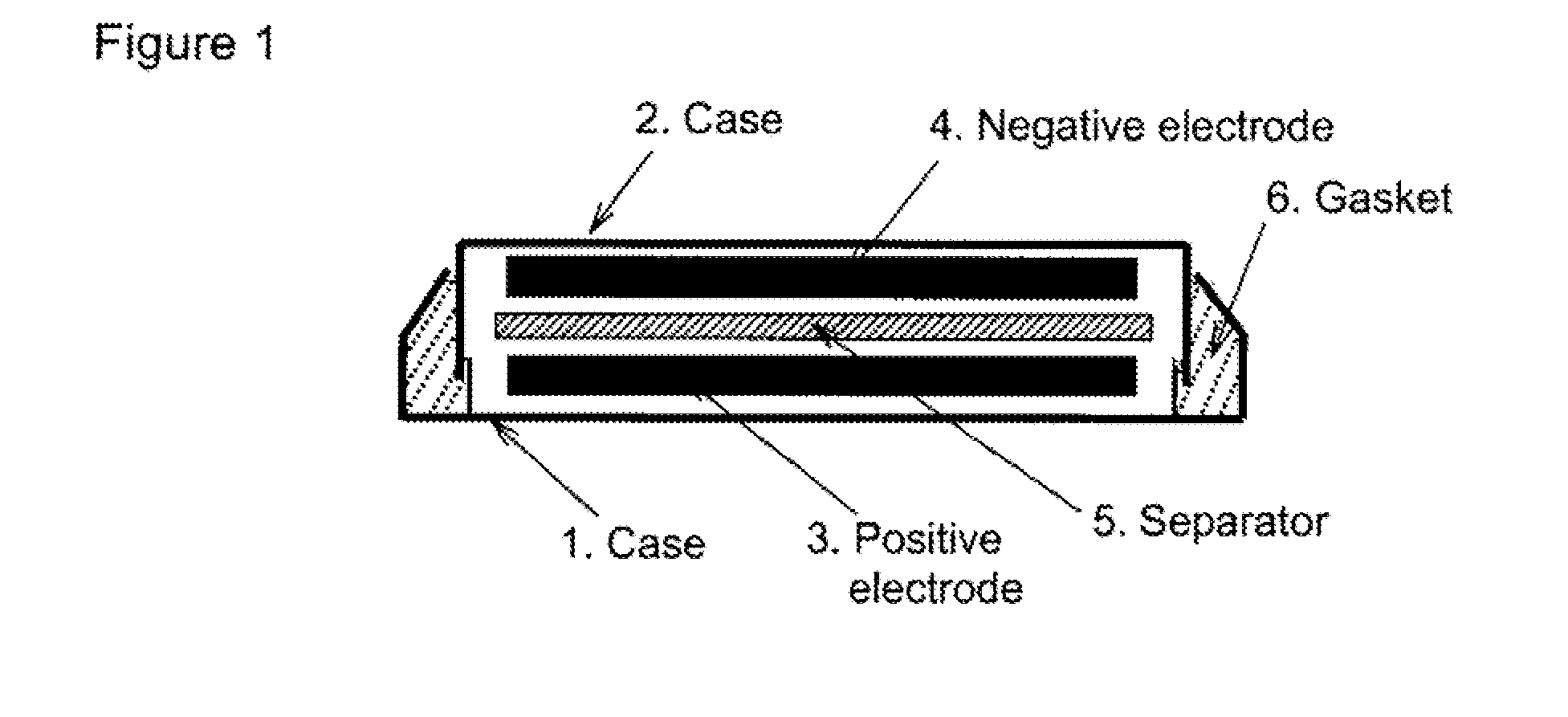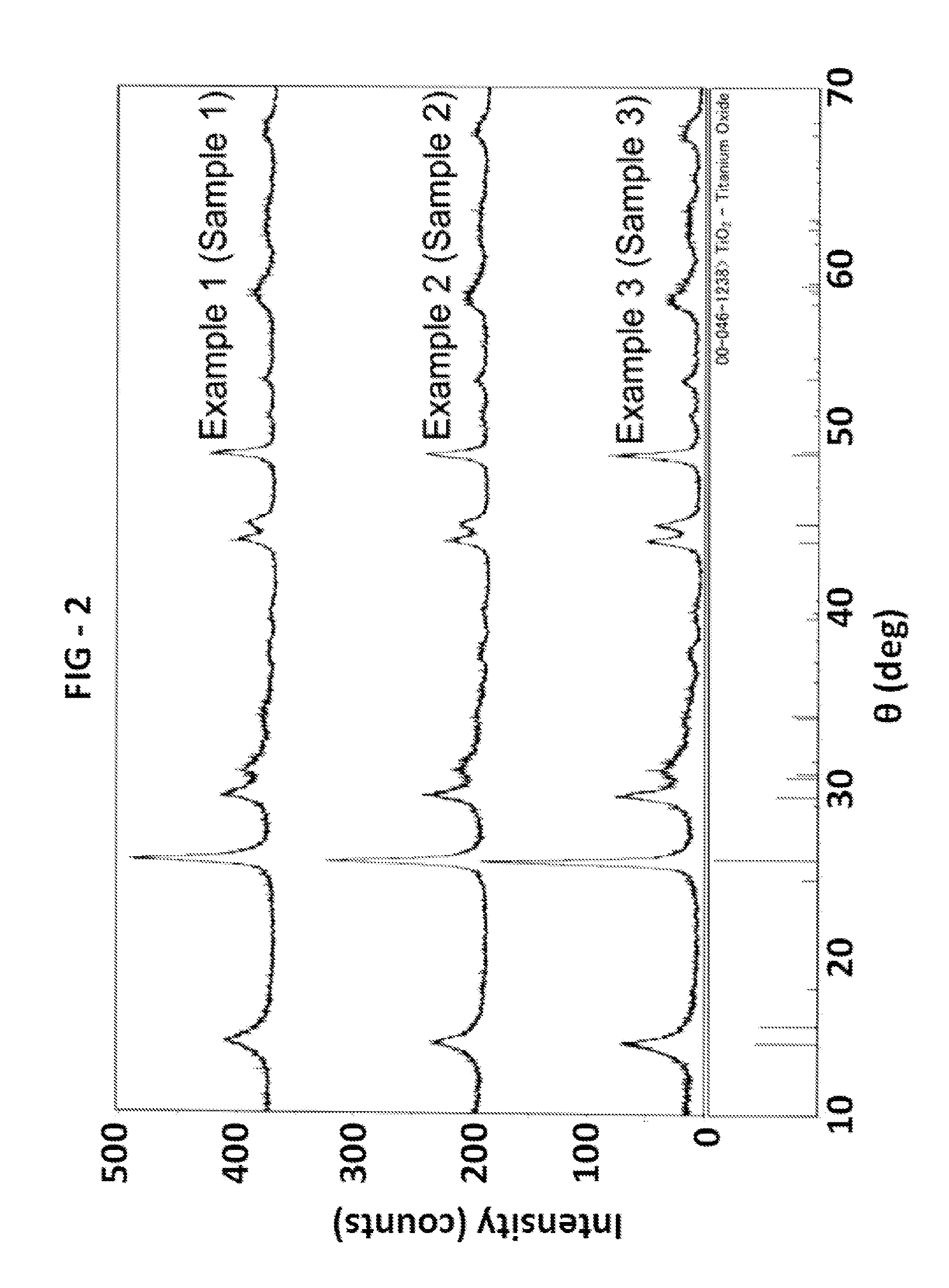Titanium oxide-based compound for electrode and lithium secondary battery using the same
a lithium secondary battery and titanium oxide technology, applied in the direction of niobium compounds, cell components, electrochemical generators, etc., can solve the problems of small energy densities of lithium secondary batteries using lisub>4/sub>osub>12/sub>, occurrence of flame, etc., to achieve large energy density and improve cycle properties.
- Summary
- Abstract
- Description
- Claims
- Application Information
AI Technical Summary
Benefits of technology
Problems solved by technology
Method used
Image
Examples
example 1
[0048]Potassium carbonate powder, titanium dioxide powder and niobium hydroxide powder were weighed out so as to satisfy the molar ratio of K:Ti:Nb=34:62:4, and were mixed and dissolved in deionized water to prepare a raw material mixed slurry. The resulting slurry was spray dried by using a spray dryer, and was fired in a box-type electric furnace at 850° C. for 1 hour. The fired product was stirred for 15 hours in an aqueous solution of 3.6N H2SO4 to exchange potassium ion with proton, and then the extraneous salts were removed by decantation washing. The proton exchange and the decantation washing were each performed twice. Solid-liquid separation was performed with a Buchner funnel with a filter paper placed therein, and the resulting solid product was dried at 110° C. for 24 hours. The dried product was heat treated in a box-type electric furnace at 400° C. to yield the sample 1.
[0049]The obtained sample was subjected to X-ray diffraction pattern measurement with an X-ray diffr...
example 2
[0051]The sample 2 was prepared in the same manner as in Example 1 except that the temperature of the firing after the raw material mixing was set at 1000° C. It was verified that the obtained sample was of a single phase composed of the bronze-structure titanium oxide being monoclinic and belonging to the space group C2 / m, and the composition thereof was represented by Ti0.94Nb0.06O2.03. The specific surface area was 15 m2 / g. The initial discharge capacity was 231 mAh / g, and the discharge capacity at the third cycle was 210 mAh / g. The discharge capacity at the 50th cycle was 210 mAh / g, and the capacity retention rate at the 50th cycle was 99% or more.
example 3
[0052]The sample 3 was prepared in the same manner as in Example 1 except that the temperature of the firing after the raw material mixing was set at 1050° C. It was verified that the obtained sample was of a single phase composed of the bronze-structure titanium oxide having a crystal structure being monoclinic and belonging to the space group C2 / m, and the composition thereof was represented by Ti0.94Nb0.06O2.03. The specific surface area was 10 m2 / g. The initial discharge capacity was 216 mAh / g, and the discharge capacity at the third cycle was 199 mAh / g. The discharge capacity at the 50th cycle was 199 mAh / g, and the capacity retention rate at the 50th cycle was 99% or more.
PUM
| Property | Measurement | Unit |
|---|---|---|
| specific surface area | aaaaa | aaaaa |
| specific surface area | aaaaa | aaaaa |
| temperature | aaaaa | aaaaa |
Abstract
Description
Claims
Application Information
 Login to View More
Login to View More - R&D
- Intellectual Property
- Life Sciences
- Materials
- Tech Scout
- Unparalleled Data Quality
- Higher Quality Content
- 60% Fewer Hallucinations
Browse by: Latest US Patents, China's latest patents, Technical Efficacy Thesaurus, Application Domain, Technology Topic, Popular Technical Reports.
© 2025 PatSnap. All rights reserved.Legal|Privacy policy|Modern Slavery Act Transparency Statement|Sitemap|About US| Contact US: help@patsnap.com



